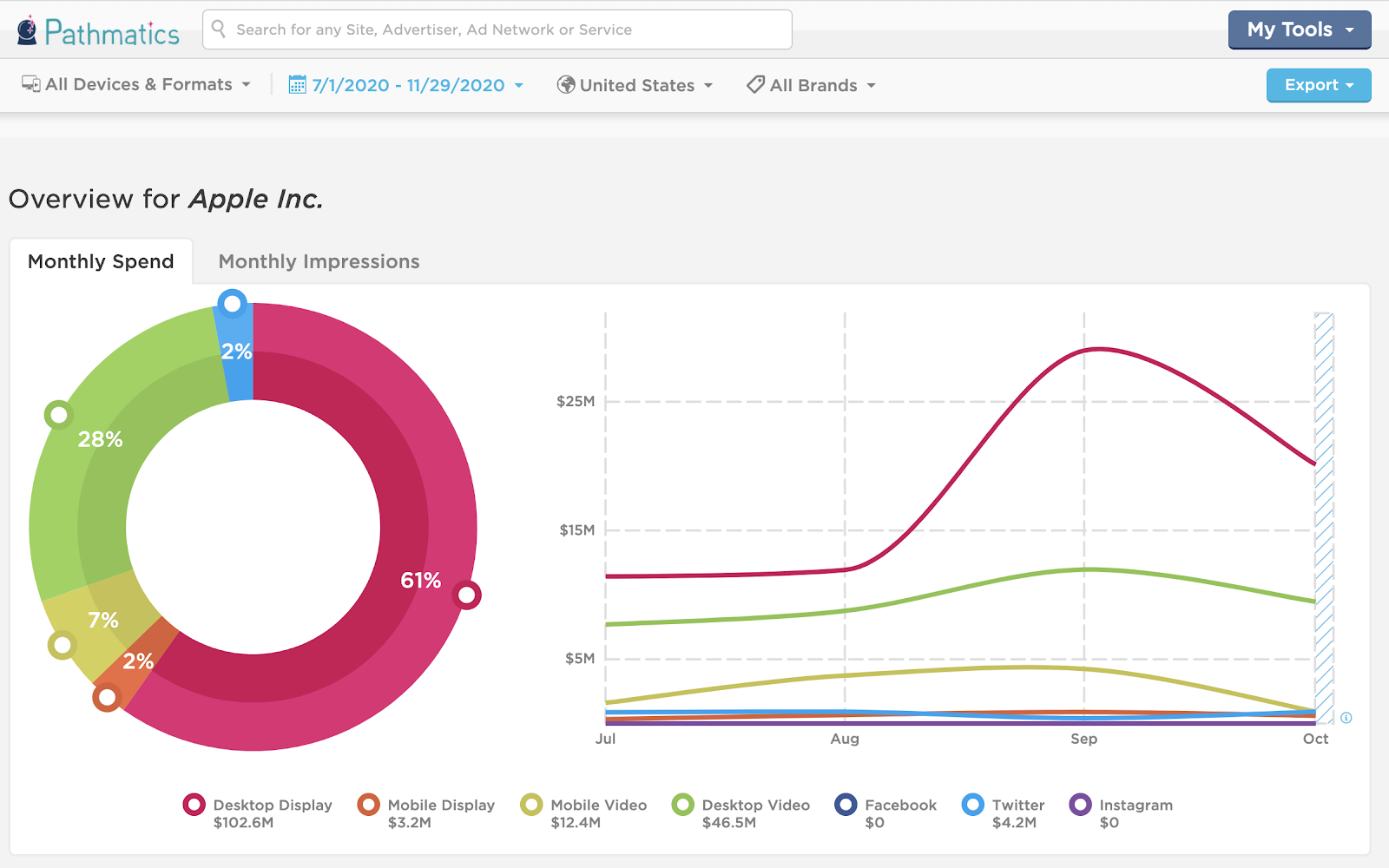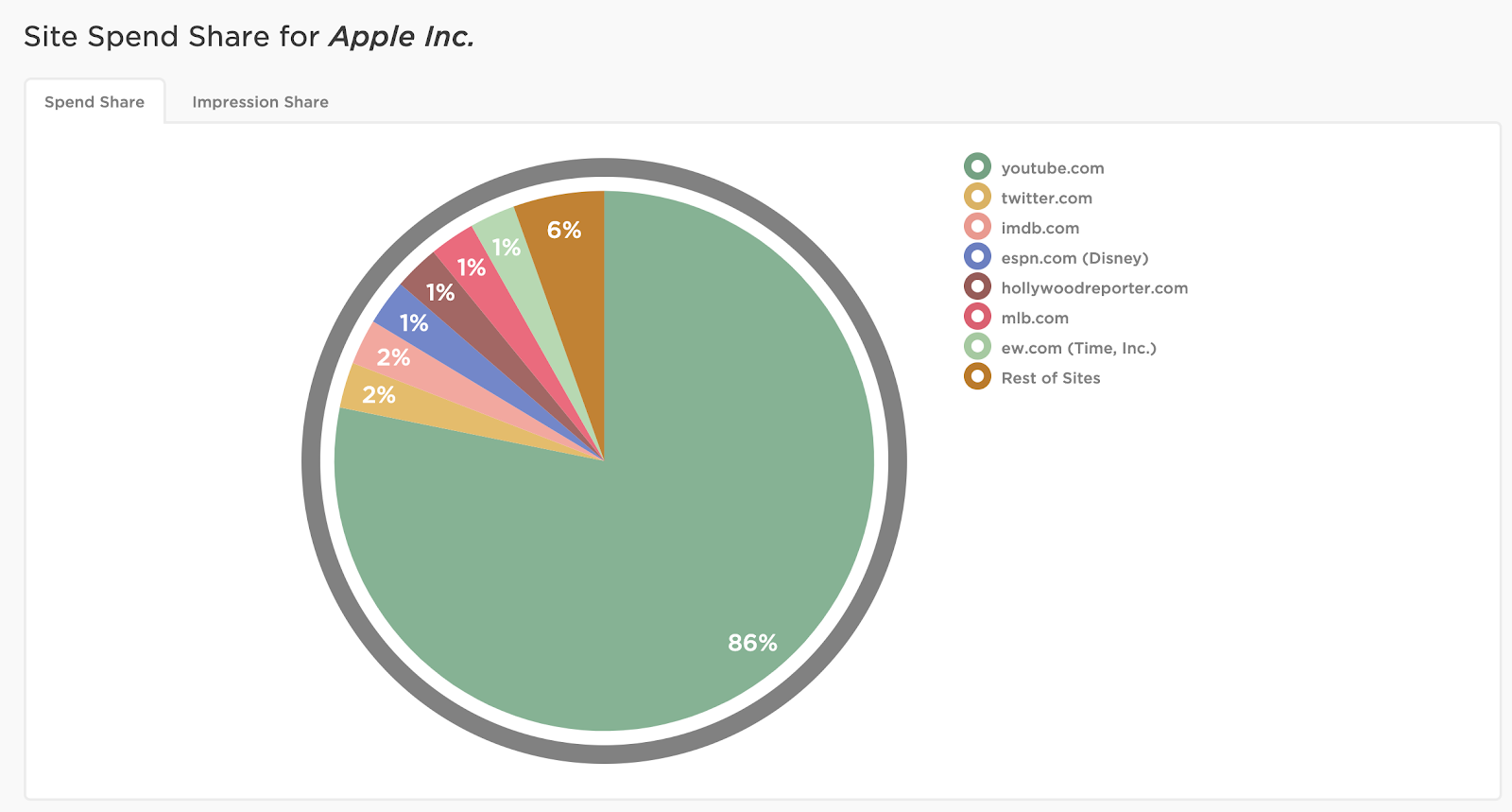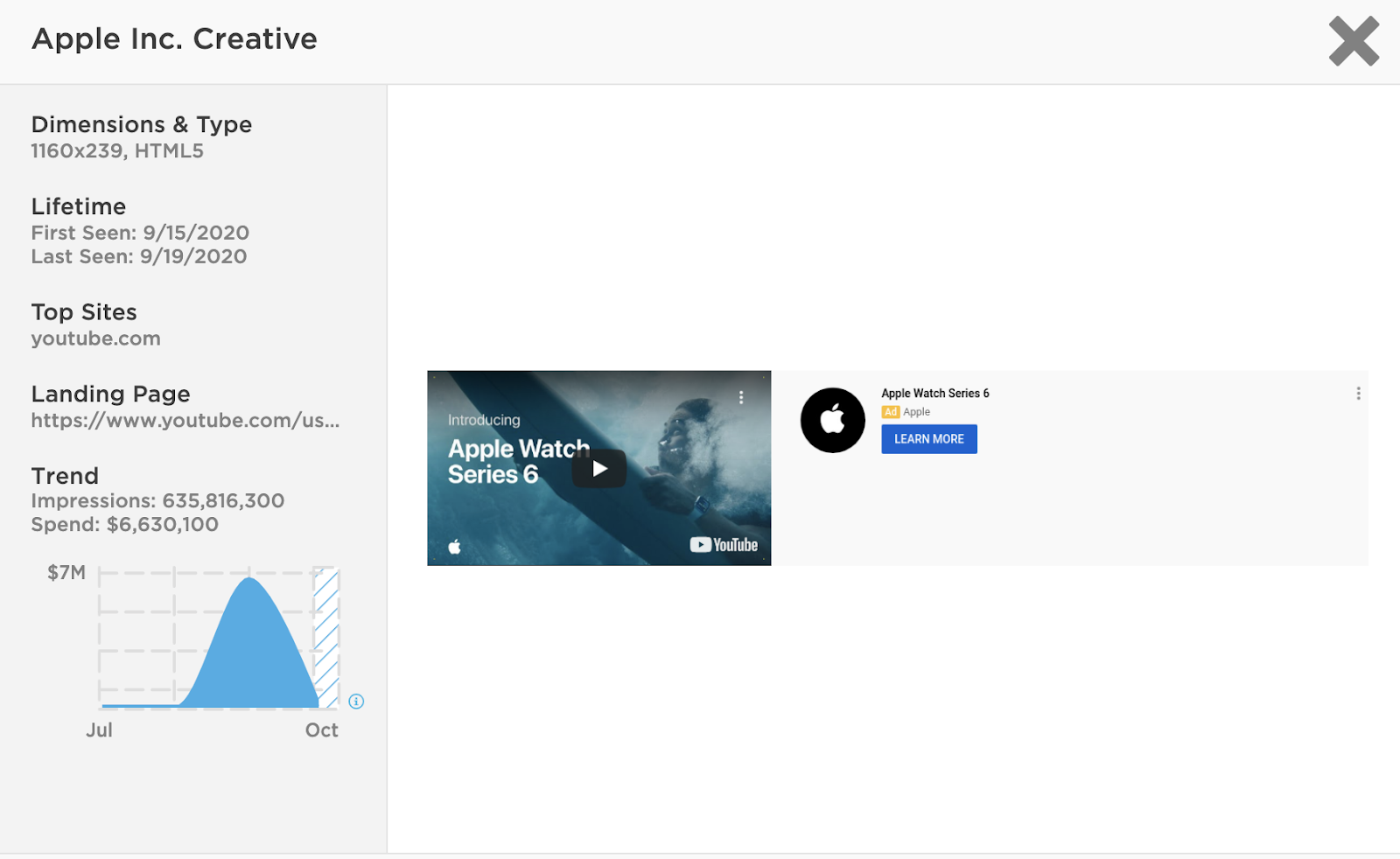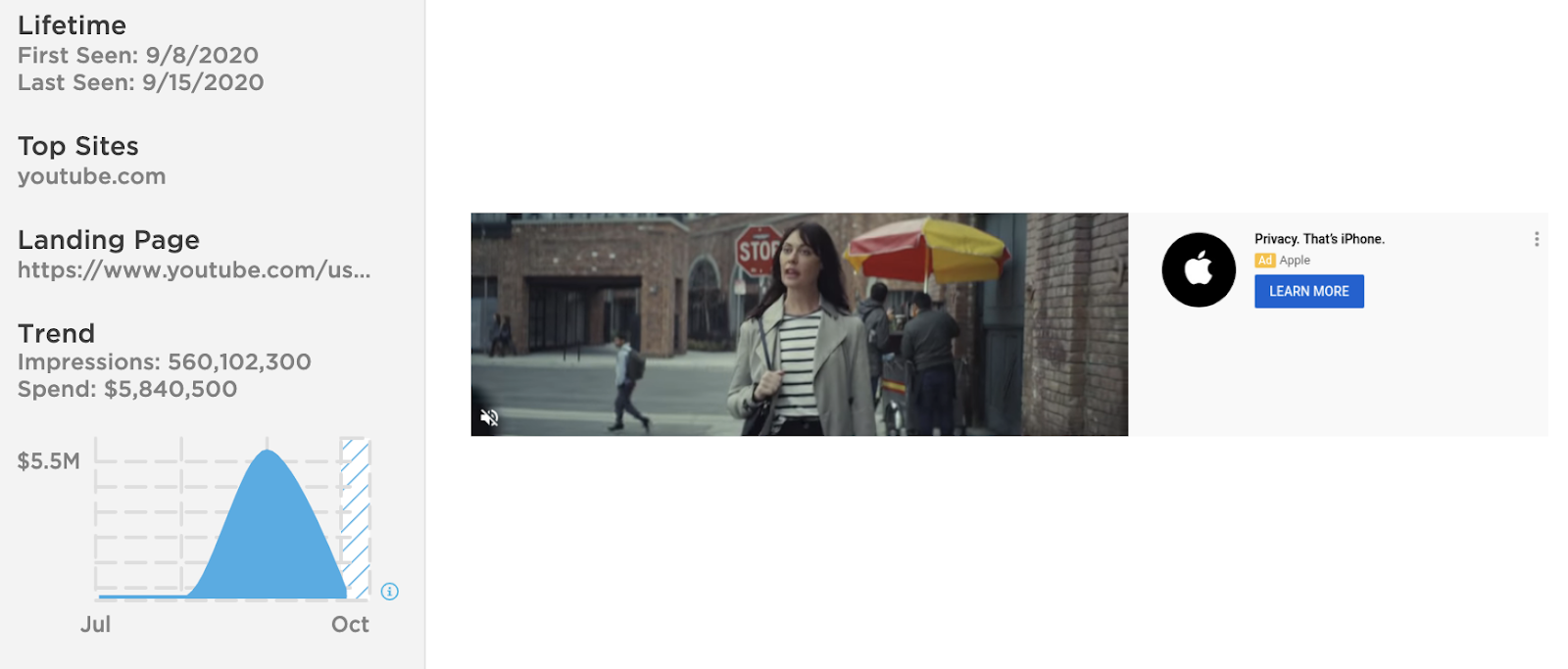
Source: https://www.pathmatics.com/blog/how-apple-is-using-digital-to-promote-its-major-2020-launches
ECommerce was already on the rise before 2020, but the boom has accelerated given consumer hesitance around shopping in brick and mortar locations during the pandemic.
This year, home electronics has been the most popular category for eCommerce spending among Americans, so let’s take a closer look at how electronics giant Apple has been promoting its newest products—the iPhone 12 Mini and Max, iPad, Apple Watch and MacBook Air.
Apple’s marketing trends for the end of 2020
Although there’s buzz that Apple still has more to come in 2020, many new products were launched on September 15 of this year. So, data for this post has been pulled from July 1 to capture Apple’s advertising trends for quarters 3 and 4 so far.

Since the beginning of Q3 2020, Apple relied heavily on desktop display ads, followed next by the desktop video format. Combined, social media and mobile advertising make up barely over 10% of Apple’s total ad placement budget.

Most of Apple’s ads appear on YouTube. Twitter and entertainment-oriented websites complete the rest of the company’s significant placements, but they fall far behind YouTube as Apple’s priority advertising real estate.
Looking behind Apple’s top ad creatives
Many of Apple’s most financially supported ad creatives over this period were launched in August ahead of the September 15 launch event. Of those, some campaigns ended shortly after the new product launch, while others remain active, hoping to catch interested buyers late to the game or shopping for the holidays.

This Apple Watch ad, Apple’s top creative for the period in terms of ad spend, followed that trend. With over $6.6 million in spend for this YouTube video ad, it’s clear that promoting the Apple Watch has been a priority.
Many iPhone users are already so loyal to the brand they purchase the new models whenever they come out anyway. It makes sense that Apple try and capitalize on the hype of the release to promote the new model of the Apple Watch, which doesn’t yet have the same consumer loyalty and excitement behind it.

That doesn’t mean Apple was not placing significant ad spend behind the iPhone 12. The creative above is the second most supported by ad spend, even though it ran only for one week. This iPhone 12 ad focuses on consumer privacy as a hot topic to generate trust in the iPhone.
But, it’s important to note that this represents trust in Apple as a brand overall—modern consumers are savvy, and understand that Apple’s commitment to privacy related to iPhones in this ad is a reflection of the brand’s evolving relationship with data privacy that also is relevant for iPad, Apple Watch, and MacBook users alike.
Looking at individual creatives isn’t enough to get a representative picture of Apple’s advertising habits in the past two quarters. That’s because the company has spent over $168 million promoting 3,530 different creatives in this timeframe, showcasing the benefits of each of its new products from many different perspectives — privacy and security, modern convenience, technical specs, and trendiness all included. Here’s the breakdown of how Apple is promoting each of its key brands:
Overall, while Apple has put significant investments into promoting its product launch, it has allocated more to advertising Apple TV than any other single brand. Given the placements of these ads on YouTube and other entertainment sites, it’s clear that Apple has a finger on the pulse of both the eCommerce trend toward favoring home electronics and the streaming industry boom.
To learn more about the data behind this article and what Pathmatics has to offer, visit www.pathmatics.com.







Sign up to receive our stories in your inbox.
Data is changing the speed of business. Investors, Corporations, and Governments are buying new, differentiated data to gain visibility make better decisions. Don't fall behind. Let us help.













Sign up to receive our stories in your inbox.
Data is changing the speed of business. Investors, Corporations, and Governments are buying new, differentiated data to gain visibility make better decisions. Don't fall behind. Let us help.





